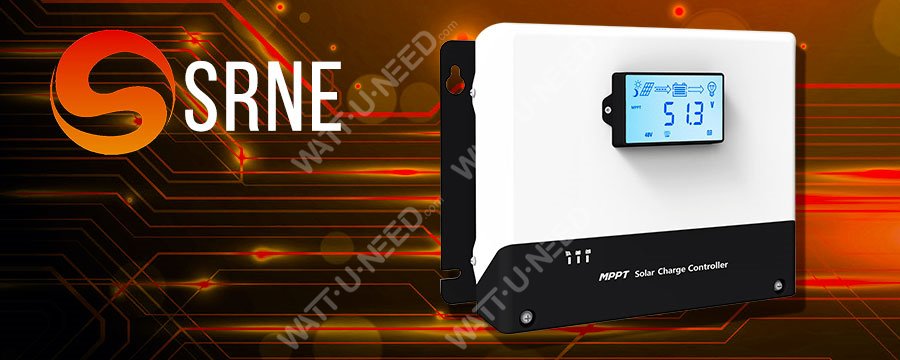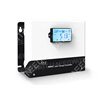More info

1. With PowerCatcher MPPT technology, the controller is able to track the maximum power point of solar panels even in a complex environment. It has a higher response speed and tracking efficiency compared to controllers with traditional MPPT technology.
2. The maximum power point tracking algorithm can significantly improve the energy utilization efficiency of photovoltaic systems. The charging efficiency is 15% to 20% higher than the conventional PWM method.
3. The effectiveness of MPPT follow-up is up to 99.9%.
4. Advanced digital power supply technology increases the energy conversion efficiency of the circuit to 98%.
5. The controller has a limited current charging mode. When the power of the solar panel exceeds a certain level and the charging current is higher than the rated current, the controller automatically lowers the charging power and brings the charging current back to the rated level.
6. Supports charging lithium batteries, gel batteries, sealed batteries and ventilated batteries, etc.
7. The controller has a protection mechanism against overheating. With charge line loss compensation, the voltage of the battery terminal can be precisely controlled.
8. The controller has a limited current charging mode. When the power of the solar panel exceeds a certain level and the charging current is higher than the rated current, the controller automatically lowers the charging power and brings the charging current back to the rated level.
9. The controller has a protection mechanism against overheating. When the temperature exceeds the set value, the charging current will decrease in linear proportion and the discharge will be stopped in order to slow down the temperature increase of the controller and prevent the controller from being damaged by overheating.
10. It supports parallel operation and meets the need for greater charging power.
11. With the built-in Bluetooth 4.0BLE module, it can perform data interaction with the APP on the mobile phone.
12. Supports standard Modbus protocol and provides protocol technology support to facilitate secondary development and application by users.
13. Programmable relay output.
Characteristics
| Model | MC4860N25 |
| System voltage | 12V/24V/36V/48V |
| Vacuum loss | 0.54W |
| Battery voltage | 9V~64V |
| Maximum open circuit voltage of pv | 250V |
| Maximum voltage range at power point | Battery voltage +2~180V |
| Nominal charging current | 60A |
| Solar panel power (12V) | 800W |
| Solar panel power (24V) | 1600W |
| Solar panel power (48V) | 3200W |
| Load conversion efficiency | ≤98% |
| Efficiency of MPPT tracing | >99% |
| Temperature compensation coefficient | -3mV/°C/2V (default, lead-acid adjustable); no temperature compensation for lithium batteries. |
| Mode of communication | TTL/RS485 Isolation; 9600 transmission speed, 3 digital bit, 1 stop bit, no control bit. |
| Bluetooth | Built-in Bluetooth 4.0BLE module, allowing you to control mobile phone applications. |
| Protection against internal temperature | When the interior temperature of the regulator is higher than the set value, it performs a linear power reduction operation. |
| Sampling the external temperature of the battery | Temperature is used for compensating battery temperature and protecting battery temperature. |
| Programmable relay | DPST 10A/250VAC;10A/30VDC |
| Protection function | Battery overcharging protection, excessive battery discharge protection, PV return protection, night charge reversal protection, controller internal overheating protection and overcurrent protection in change |
| Operating temperature | -35°C ~ +65°C |
| Elevation | ≤3000m |
| Level of protection | IP32 |
| Weight | 3.6kg |
| Product size | Conventional:266*194*119mm
MC4:266*226*119mm |





















